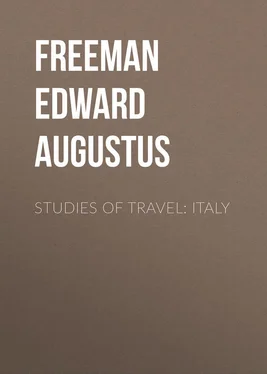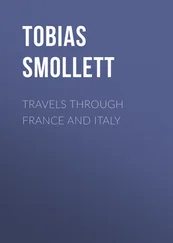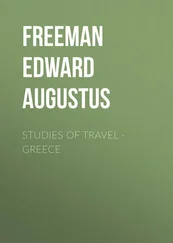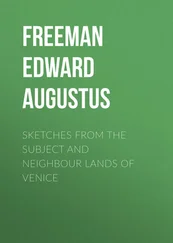Edward Freeman - Studies of Travel - Italy
Здесь есть возможность читать онлайн «Edward Freeman - Studies of Travel - Italy» — ознакомительный отрывок электронной книги совершенно бесплатно, а после прочтения отрывка купить полную версию. В некоторых случаях можно слушать аудио, скачать через торрент в формате fb2 и присутствует краткое содержание. Жанр: foreign_antique, foreign_prose, на английском языке. Описание произведения, (предисловие) а так же отзывы посетителей доступны на портале библиотеки ЛибКат.
- Название:Studies of Travel: Italy
- Автор:
- Жанр:
- Год:неизвестен
- ISBN:нет данных
- Рейтинг книги:5 / 5. Голосов: 1
-
Избранное:Добавить в избранное
- Отзывы:
-
Ваша оценка:
- 100
- 1
- 2
- 3
- 4
- 5
Studies of Travel: Italy: краткое содержание, описание и аннотация
Предлагаем к чтению аннотацию, описание, краткое содержание или предисловие (зависит от того, что написал сам автор книги «Studies of Travel: Italy»). Если вы не нашли необходимую информацию о книге — напишите в комментариях, мы постараемся отыскать её.
Studies of Travel: Italy — читать онлайн ознакомительный отрывок
Ниже представлен текст книги, разбитый по страницам. Система сохранения места последней прочитанной страницы, позволяет с удобством читать онлайн бесплатно книгу «Studies of Travel: Italy», без необходимости каждый раз заново искать на чём Вы остановились. Поставьте закладку, и сможете в любой момент перейти на страницу, на которой закончили чтение.
Интервал:
Закладка:
Edward A. Freeman
Studies of Travel: Italy
Arezzo
The city of Mæcenas, and of a whole crowd of famous men of later times, shows no outward signs of being much frequented by travellers. There is some difficulty there in getting so much as an Italian newspaper, and, though excellent photographs have been taken of some of the chief buildings, they must be sought for at Florence; they are not to be bought at Arezzo. Yet the old Etruscan city has many attractions, among them surely the singular cleanness of its streets, and, above all, that clear and pure air which is thought to have had something to do with nourishing the genius of so many of its citizens in so many different ways. Perhaps, on the whole, Arezzo does not suffer from not having yet put on the cosmopolitan character of some of its neighbours. And if the city does not, either as Arretium or as Arezzo, stand forth in the first rank of Italian cities, still it has a long history under both forms of its name. If, again, its buildings do not rank with those of Pisa or Lucca, still there is quite enough both in the general aspect of the city, and in some particular objects within its walls, to claim a day or two's sojourn from any one who is not eager to rush from Florence to Rome as fast as the so-called express train can carry him.
Arezzo, as to its physical site, holds a middle position between cities which sit perched on a high hill-top like Fiesole, and cities which, like Florence, lie flat or nearly so on the banks of a great river. It has its river, if we may give that name to the mere brook which presently loses itself in the Chiana, as the Chiana soon loses itself in the Arno. The river too has a bridge, but both river and bridge have to be sought for; they form no important points in the general aspect of the city. The bridge at Arezzo is not one of those to which we instinctively go the first thing to take a general view of the city as a whole. The hill is a more real thing, as any one will say who climbs some of its steeper streets. Still it is one of those hills which seem to borrow height and steepness from the fact of being built upon. If it were covered with green grass, it would simply pass as one of several small hills which break the flat of the rich plain, girded in on all sides by higher mountains, which rise, in February at least, into vast snowy heights in the further distance. Still Arezzo has distinctly the character of a hill city, not of a river city; the hill counts for a good deal, while the river counts for nothing. The best points for a general view from below will be found on the town wall, a little way to the left of the railway station; while to look down on Arezzo we must climb to the castle in the eastern corner of the city, whose Medicean fortifications look strong enough without, but which, within, has gardens and fig trees level with the walls, and rabbits running about at large among them. The castle therefore forms no special object in the general view; it simply passes as a more marked part of the line of the city walls. These last remain in their whole circuit, except where they have been broken down to make the approach to the railway; surely a new gate would have been a better way of compassing this object. A town wall standing free, as those of Arezzo stand in nearly their whole range, is always a striking object, and one whose circuit it is pleasant and instructive to make. And it has a special interest in some cities, of which Arezzo is one, which have, so to speak, a show side. One side lies open to the world; the ancient roads, the modern railway, approach it; the city dies away into the country by gradually descending suburbs. On the other side, the wall suddenly parts the inhabited town, sometimes from actual desolation, at all events from open fields; the hill rises sheer above whatever lies beyond it. So it is with the north-eastern side of Arezzo, if we go behind the cathedral and the castle; we have not fully taken in the lie of the city without taking this walk to its rear. Still we must not look to the walls of Arezzo for the special interest of some other walls. They will not give us either Roman or Etruscan blocks, nor yet the picturesque outline of mediæval towers and gateways. The walls put on their present aspect in Medicean times, and over one of the gates we see an inscription which illustrates one stage of a tyrant's progress. The first avowed sovereign Cosmo appears as "Duke of Florence and Siena." He had inherited one enslaved commonwealth; he had himself enslaved another; meanwhile he was waiting for the fitting reward of such exploits in the higher rank and more sounding title of a Grand Duke of Tuscany.
In the general view of Arezzo there can be hardly said to be any one dominant object. If the castle made any show, it and the cathedral church, standing nearly on the same level on the highest ground in the town, would stand well side by side. As it is, the body of the duomo is the prominent feature in the view. But it is hardly a dominant feature. It is the only building whose body shows itself, but it rises among a crowd of towers, ecclesiastical and municipal, and one of them, the great campanile of St. Mary della Pieve , though the body of its church does not show itself far below, is a distinct rival to the cathedral, and utterly dwarfs its small and modern, though not ungraceful, octagon tower. These two churches form the two greatest architectural objects in Arezzo. The municipal element does not show itself so largely as might be looked for. The town-house is there, and the town-tower, and that hard by the duomo ; but they do not hold, even comparatively, anything like the same position as their fellows in the great Florentine piazza. Perhaps this is not wonderful in a city which was so largely Ghibelin, and whose most noted historical character was a fighting bishop. Guy Tarlati, bishop and lord of Arezzo, keeps – though not on its old site – his splendid tomb in the duomo , on which are graven the names and likenesses of the castles which he won, and how King Lewis of Bavaria took the Lombard crown at his hands. But Arezzo has little or nothing to show in the way of houses or palaces or of street arcades. Its most striking building besides the churches is the front of that called the Fraternità dei Laici , in the open sloping space which seems to mark the forum of Arretium. This is a work in the mixed style of the fourteenth century, but so rich and graceful in its detail as to disarm criticism. Within, it contains the public library and museum. This last has much to show in many ways; most striking of all, because thoroughly local, are the huge tusks and other remains of the fossil elephants and other vast beasts of bygone days. The valley of the Chiana is full of them. Naturally enough, in the early days of science, when elephants' bones were no longer thought to be those of giants, they were set down as relics of the Gætulian beasts of Hannibal.
Something may be picked up here and there in the other churches of Arezzo; but it is Santa Maria della Pieve which is the real object of study. The duomo is absolutely without outline; it is a single body with nothing to break it, and nothing to finish it at either end. But its proportions within come somewhat nearer to Northern ideas than is common in the Italian Gothic, and its apse specially reveals the German hand to which tradition attributes the building. The church of La Pieve is of a higher order. It has real shape within and without. Its four arms should support a cupola, only the cupola has never been finished; the apse is in the very best form of the Italian Romanesque; the west front is called a copy of Pisa; but neither its merits nor its defects seem borrowed from that model. Part of it is sham, which nothing at Pisa is, while the small arcades stand out free, as at Lucca, but not at Pisa.
Читать дальшеИнтервал:
Закладка:
Похожие книги на «Studies of Travel: Italy»
Представляем Вашему вниманию похожие книги на «Studies of Travel: Italy» списком для выбора. Мы отобрали схожую по названию и смыслу литературу в надежде предоставить читателям больше вариантов отыскать новые, интересные, ещё непрочитанные произведения.
Обсуждение, отзывы о книге «Studies of Travel: Italy» и просто собственные мнения читателей. Оставьте ваши комментарии, напишите, что Вы думаете о произведении, его смысле или главных героях. Укажите что конкретно понравилось, а что нет, и почему Вы так считаете.












